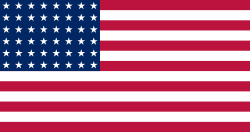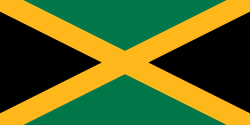Frank Wykoff
| Frank Wykoff | |
|---|---|
 | |
| Osobní informace | |
| Rodné jméno | Frank Clifford Wykoff |
| Narození | 29. října 1909 Des Moines |
| Úmrtí | 1. ledna 1980 (ve věku 70 let) Altadena |
| Stát | |
| Výška | 178 cm |
| Kariéra | |
| Disciplína | 100 m |
| Účasti na LOH | 1928, 1932, 1936 |
| Některá data mohou pocházet z datové položky. | |
| Přehled medailí | ||
|---|---|---|
| zlato | LOH 1928 Amsterdam | štafeta 4×100 m |
| zlato | LOH 1932 Los Angeles | štafeta 4×100 m |
| zlato | LOH 1936 Berlín | štafeta 4×100 m |
Frank Clifford Wykoff (29. října 1909 Des Moines, Iowa — 1. ledna 1980 Altadena, Kalifornie) byl americký atlet, známý pod přezdívkou „Glendale Greyhound“.[1] Je kromě Usaina Bolta jediným trojnásobným olympijským vítězem v běhu na 4×100 m.[2]
Na olympiádě 1928 v Amsterdamu běžel první úsek sprinterské štafety, ve vítězném týmu USA byli kromě něj James Quinn, Charles Borah a Henry Russell. Čas vítězů byl rovných 41 sekund, čímž vyrovnali světový rekord.
V roce 1932 v Los Angeles vyhrálo domácí kvarteto ve složení Bob Kiesel, Emmett Toppino, Hector Dyer a Frank Wykoff ve světovém rekordu 40,1 s.
V Berlíně na hrách 1936 byl Wykoff opět finišmanem a zvítězil spolu s Jesse Owensem, Ralphem Metcalfem a Foyem Draperem, když časem 39,8 s jako první v historii pokořili čtyřicetivteřinovou hranici.
V individuálním olympijském závodě na 100 metrů obsadil Frank Wykoff v letech 1928 a 1936 shodně čtvrté místo. Také vyhrál na této trati amatérské mistrovství USA v lehké atletice v letech 1928 a 1931. V roce 1930 vytvořil světový rekord v běhu na 100 yardů časem 9,4 s.[3]
Absolvoval Univerzitu Jižní Kalifornie, byl členem sdružení Kappa Alpha Order. Po ukončení sportovní činnosti pracoval jako ředitel školy v Los Angeles.
Reference
- ↑ http://articles.latimes.com/1999/dec/31/sports/sp-49221
- ↑ http://www.abc.net.au/news/2016-08-20/usain-bolt-gets-set-for-triple-triple-farewell-rio-olympics/7768964
- ↑ Archivovaná kopie. www.usatf.org [online]. [cit. 2016-11-26]. Dostupné v archivu pořízeném dne 2016-11-27.
Externí odkazy
 Obrázky, zvuky či videa k tématu Frank Wykoff na Wikimedia Commons
Obrázky, zvuky či videa k tématu Frank Wykoff na Wikimedia Commons - Frank Wykoff v databázi Olympedia (anglicky)
- http://data.desmoinesregister.com/hall-of-fame/single.php?id=500[nedostupný zdroj]
Média použitá na této stránce
Olympic Rings without "rims" (gaps between the rings), As used, eg. in the logos of the 2008 and 2016 Olympics. The colour scheme applied here was specified in 2023 guidelines.
Olympic Rings without "rims" (gaps between the rings), As used, eg. in the logos of the 2008 and 2016 Olympics. The colour scheme applied here was specified in 2023 guidelines.
US Flag with 48 stars. In use for 47 years from July 4, 1912, to July 3, 1959.
(c) I, Cmapm, CC BY-SA 3.0
The flag of the Soviet Union (1955-1991) using a darker shade of red.

(c) I, Cmapm, CC BY-SA 3.0
The flag of the Soviet Union (1955-1991) using a darker shade of red.

Flag of Jamaica. “The sunshine, the land is green, and the people are strong and bold” is the symbolism of the colours of the flag. GOLD represents the natural wealth and beauty of sunlight; GREEN represents hope and agricultural resources; BLACK represents the strength and creativity of the people. The original symbolism, however, was "Hardships there are, but the land is green, and the sun shineth", where BLACK represented the hardships being faced.
Photo of US Olympic team sprinters (from left) Jesse Owens, Ralph Metcalfe and Frank Wykoff on the deck of the S.S. Manhattan before they sailed for Germany to compete in the 1936 Olympics. They're shown doing a light warm-up on the deck.
Flag of the unified Team of Germany for the Olympic Games, 1960–1968.










